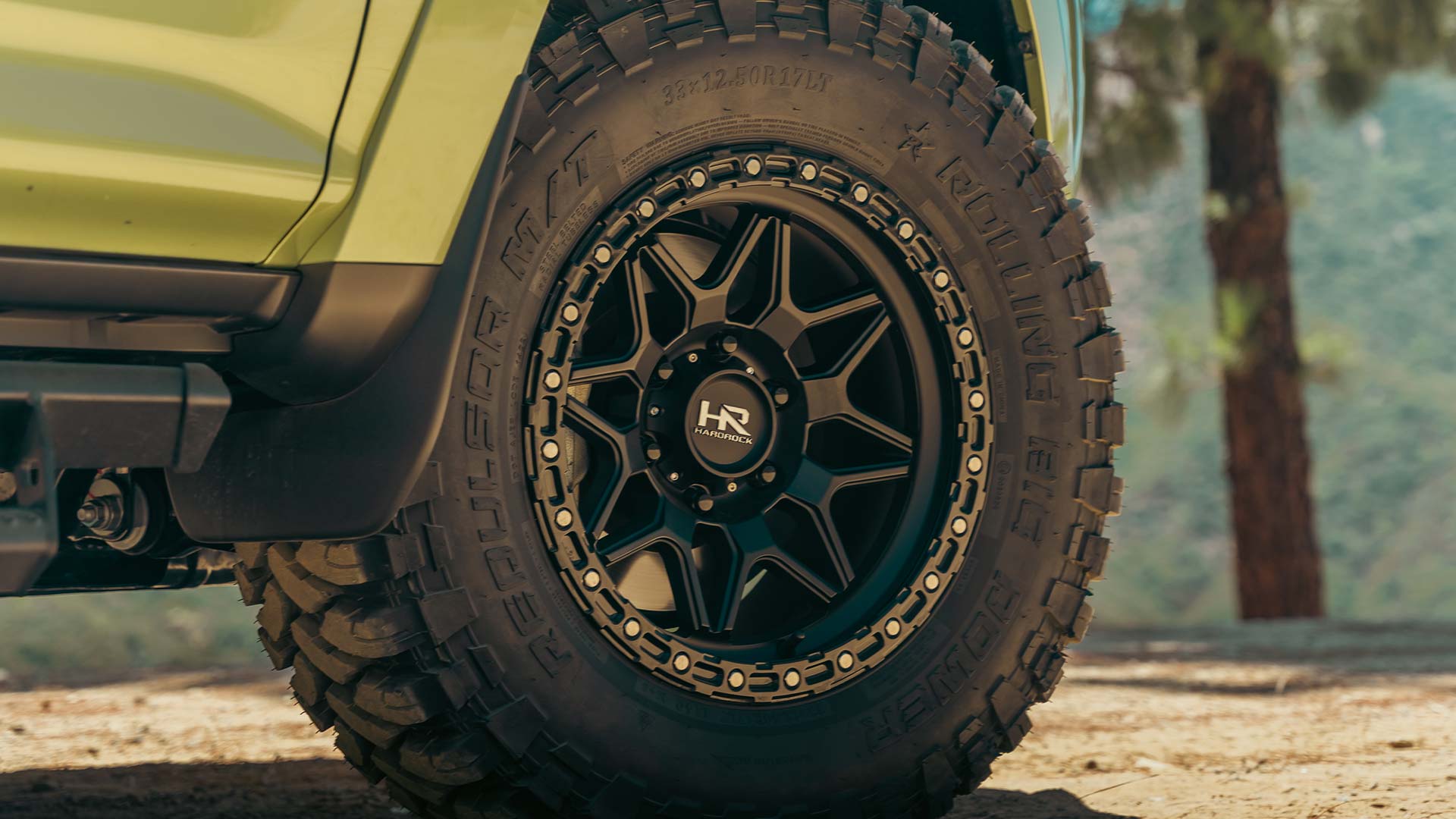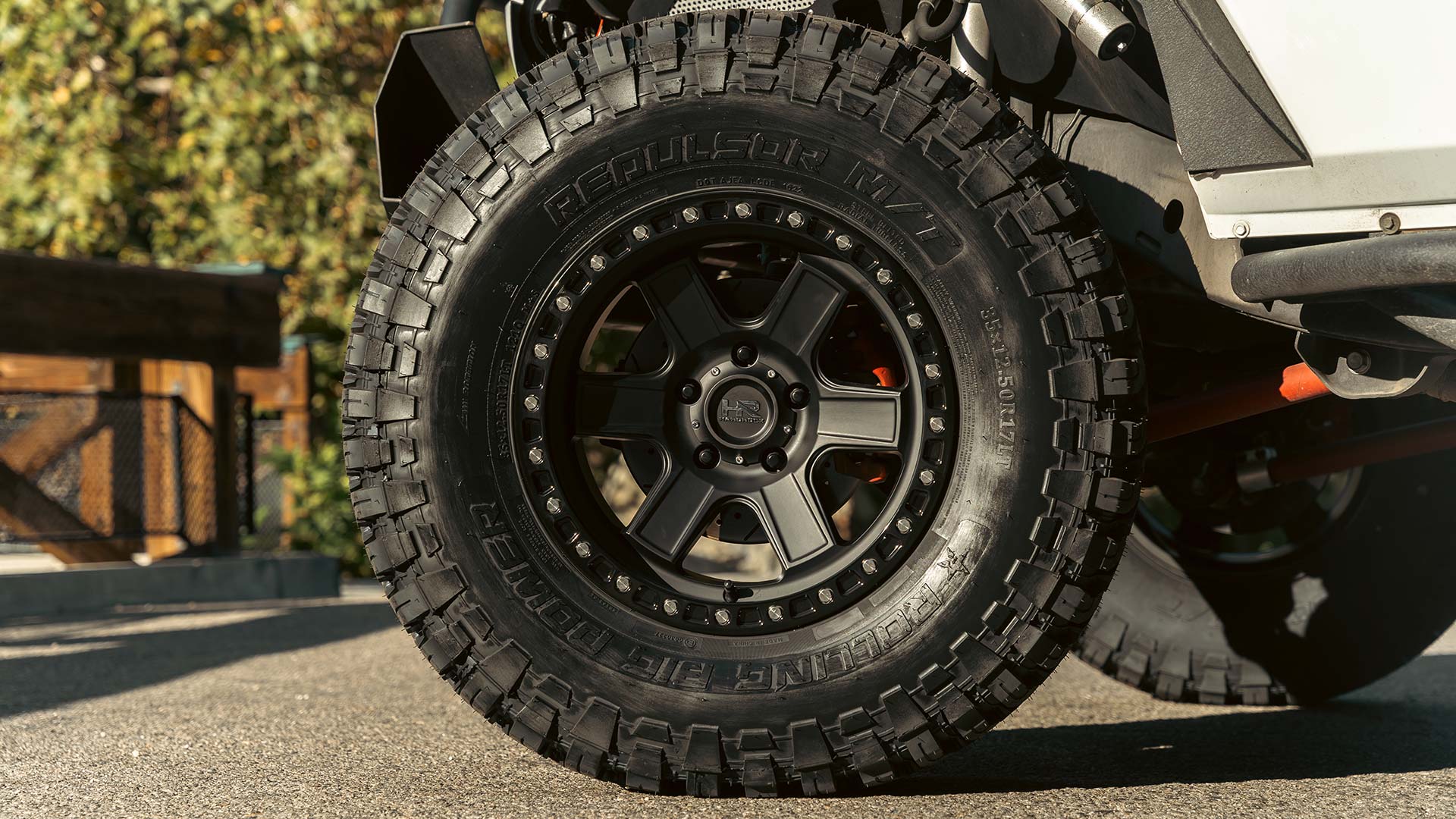When it comes to off-roading, the right set of wheels can make all the difference.
Whether you’re tackling rugged trails, sandy dunes, or muddy paths, off-road wheels are designed to provide the durability and performance needed to conquer the toughest terrains. But with so many options available, how do you choose the right ones for your adventure?
From understanding the different types of wheels to choosing the right size and ensuring proper maintenance, this guide covers everything you need to know to make an informed decision.
Off-road wheels are specifically engineered to withstand the harsh conditions and stresses of off-road driving.
Unlike regular street wheels, they are built with stronger materials, have unique designs for better grip and performance, and often feature reinforced structures to handle the added strain.
Here’s what sets them apart:
Off-road wheels are typically made from high-quality aluminum alloys or steel. Aluminum wheels are lighter and can improve your vehicle’s handling and fuel efficiency, while steel wheels are heavier but offer exceptional strength and are less likely to crack under extreme conditions.
Beadlock wheels are a popular choice for serious off-roaders. These wheels use a locking ring to clamp the tire’s bead to the wheel, preventing the tire from slipping off the rim at low pressures. This feature is crucial for maintaining traction and stability on challenging terrains.
Off-road wheels come with aggressive, robust designs that not only look great but also enhance performance. Features like deep lips, wide offsets, and multiple lug patterns help improve your vehicle’s stance and allow for better customization options.
Given the environments they are used in, off-road wheels often come with special coatings or finishes that resist corrosion from mud, water, and other elements. This ensures they maintain their appearance and functionality over time.

The size of your off-road wheels can significantly impact your vehicle’s performance.
Swapping wheels can provide better ground clearance, which is crucial for navigating rough terrains. However, they can also affect your vehicle’s handling and fuel efficiency.
Here’s how to choose the right size:
Most off-road wheels range from 15 to 20 inches in diameter, with widths varying from 7 to 12 inches. The right size depends on your vehicle’s specifications and the type of off-roading you plan to do. Wider wheels can provide better stability and traction but may require modifications to your vehicle.
The offset and backspacing of your wheels determine how far they sit from the vehicle’s suspension components. A negative offset pushes the wheels outwards, providing a wider stance and better stability. Proper backspacing ensures that your wheels and tires don’t rub against your vehicle’s suspension.
Ensure that your wheels are compatible with your chosen off-road tires. The tire and wheel should work together to provide the best performance, so check the manufacturer’s specifications for compatibility.
Proper installation and maintenance of your off-road wheels are crucial for optimal performance and safety. Here are some tips to keep in mind: Professional installation by a shop, regular inspections, cleaning and coating with appropriate cleaning products, and using the proper torque settings.

Beadlock wheels are designed to lock the tire's bead to the wheel, preventing the tire from slipping off the rim at low pressures. This feature is particularly beneficial for off-roading because it allows you to run lower tire pressures, which increases traction and improves performance on difficult terrains like rocks, sand, and mud. Beadlock wheels are ideal for serious off-road enthusiasts who need maximum grip and stability.
Choosing the right size of off-road wheels depends on your vehicle's specifications and the type of off-roading you plan to do. Consider the diameter and width of the wheels. Most off-road wheels range from 15 to 20 inches in diameter and 7 to 12 inches in width. Additionally, pay attention to the offset and backspacing, which determine how far the wheels sit from the suspension components. Ensure that the wheels are compatible with your off-road tires for optimal performance.
Both steel and aluminum alloy wheels have their advantages for off-roading. Steel wheels are incredibly strong and durable, making them ideal for rock crawling and heavy-duty use. However, they are heavier, which can affect performance and fuel efficiency. Aluminum alloy wheels are lighter, improving handling and fuel efficiency, and are great for a variety of off-road activities. The choice between steel and aluminum depends on your specific needs and preferences.
Maintaining your off-road wheels involves regular inspections, cleaning, and proper installation. After each off-roading session, inspect your wheels for cracks, dents, or signs of wear. Clean them using appropriate products to prevent corrosion and damage, and consider applying a protective coating. Always follow the manufacturer's torque settings when installing your wheels to ensure they are securely attached and balanced. Regular maintenance will keep your wheels in top condition and extend their lifespan.
While some enthusiasts prefer to install their off-road wheels themselves, it is generally recommended that they be professionally installed. Professional shops have the necessary tools and expertise to ensure the wheels are correctly balanced and aligned, preventing issues like uneven tire wear and poor handling. Additionally, professional installation can save time and provide peace of mind, knowing that your wheels are securely and properly installed for optimal performance and safety.
Great off-road wheels demand the best off-road tires. Are you ready to equip your vehicle with the best off-road tires on the market?
At RBP Tire, we offer a wide range of top-quality off-road tires designed to handle the harshest conditions.
Visit us today at RBP Tires or contact us to speak with one of our specialists.
Let’s gear up and hit the trails with confidence!